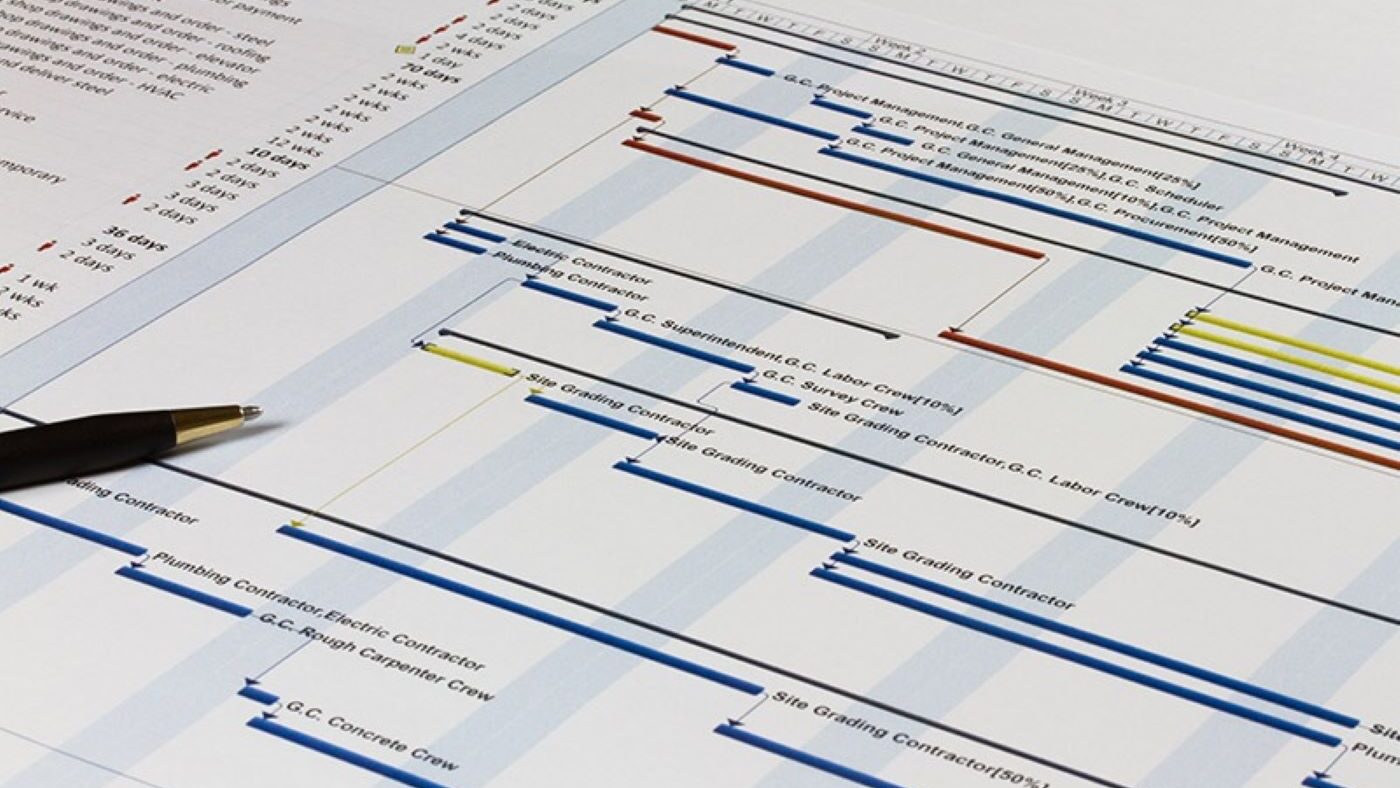There are many facets of construction that responsible managers try to control. From the sequencing of construction activities to the amount budgeted for specific scopes of work, a competent project management team can dictate the momentum of a project.
Take vertical construction projects for example, such as high-rise apartments, that can erect an entire floor each week. These often appear to operate like a well-oiled machine: from the assembly and disassembly of scaffolding and formwork systems, to the mechanical, electrical and plumbing (MEP) coordination of above-ceiling corridor work, all of the techniques we’re taught in this profession to successfully complete a construction project prove true — time and time again.
- Pre-construction meetings establish a timeline and flow to the sequence of work that is crucial for efficient progress.
- Weekly subcontractor meetings ensure that all players are on the same page and aware of the activities scheduled for the next 2-3 weeks.
- Daily morning meetings between superintendents and foremen help the coordination at each step of the process.
While all that is true, however, there is one critical aspect to construction that always has an impact in whatever form it arrives.
I am talking here about the weather.
The weather must be monitored daily in order to plan the appropriate work and limit the weather impact in construction.
Exterior painters cannot work when it’s too cold nor can roofers work when it’s raining. Concrete pours cannot cure if the ambient temperature remains low for an extended period. Cranes cannot operate in snowstorms or times of limited visibility or high winds. It’s evident that activities from all aspects of the construction project can be affected by weather trends. And while these trends can be typical depending on the season of the year, they can also vary wildly day-to-day and even hour-to-hour.

What is the weather impact on construction scheduling?
Weather delays are one of the leading external causes of schedule impacts in construction projects. Every phase of the construction process can be severely impacted by weather that ultimately delays progress. Cold temperatures and early seasonal snowstorms during the earthwork phase prohibit successful concrete pours due to minimum curing temperatures and delay subsequent activities like placing steel support columns or the concrete footings for the structure.
On most construction projects, the “topping-out ceremonies” occur the day that vertical construction has been completed (a big milestone). At this point, it becomes a scramble to install the roof and make the building weathertight, meaning windows and the exterior façade are in place. Interior construction is very limited until the building is weather tight, otherwise any completed work is exposed to the mercy of the elements.
If weather-driven water leaks occur
When rainy weather with driving winds leads to water infiltration inside the building, the delays are felt in more ways than one. A responsible manager would see ponding water and wet drywall boards and take the steps to discover whether or not harmful mold is present. This crucial investigation has a negative cascading effect (Figure 2 below) into the work activities that follow drywall installation such as flooring, cabinetry and painting to name a few. A delay like this has both schedule and cost implications that affect not only the completion of the project, but also the profit of the contractor if construction weather delays were not negotiated and accounted for in contract negotiations.

How can weather delays be prevented in construction projects?
Factoring in weather conditions is an effective mitigation tactic to prepare oneself for any unforeseen weather that impacts work production. For example, it is common in the Northeastern United States to include winter condition contingencies when preparing a budget to account for the yearly burden this season puts on construction projects.
Modeling weather delays is a topic actively researched by engineering institutions globally. In a recent article in the Journal of Construction Engineering and Management, author Minhyuk Jung¹ notes “It is very important to be able to estimate the delay that would result from such severe weather because construction contracts generally differentiate between weather delays that can be anticipated and those that cannot.”
Other ways to combat and prevent weather delays in construction are the following:
- Be proactive in monitoring upcoming weather reports and plan site activities accordingly.
- Schedule the crane on a clear day and delay appliance delivery until after the thunderstorm.
- Have the foresight to store materials on pallets and off the ground in order to protect them from standing water or flood situations, thereby limiting potential damage.
- Begin trenching and earthwork activities when the ground is dry and cover the hole before a rain event to maintain work production and not divert resources to pump water out of the pit.
- Install the windows and exterior façade as early as possible to protect the interior work in place.
Proactive scheduling and a bit of forward thinking based on experience will minimize weather risks in construction and save time and money in the long run.
Are all weather events equal?
Sure, a snowstorm and a tropical storm are both storms, but when they occur and the effects they have can have polar opposite outcomes. Not all weather events are justified in granting time extensions because of construction delays. A well-written construction contract has terms that clearly outline the proper recourse for weather delays and related events. It is often the key document to review when trying to estimate, quantify and justify the impact of a weather delay. It is important to negotiate these terms at the onset of the construction project to ensure a clear understanding in case one of the clauses needs to be invoked.
There are four criteria the event must meet in order to validate the weather delay²:
- Did the delay occur within the original timeline of the project, including all other previous delays which the contractor wasn’t responsible?
- Was the delayed activity on the critical path and did it affect the completion date of the project?
- Was the weather excessive in comparison to normal weather conditions for the season, or excessive compared to what should have been accounted for per the terms of the contract documents?
- Is there proper documentation for the specific activities delayed during the weather event? Documentation may be the most crucial step in realizing the delay when it is time to request time extension or change orders. The project folder should be flooded with photos and daily log entries that capture the extent of any weather impacts on the construction project and should be shared as soon as possible with the owner for consideration.
In conclusion, weather delays have the ability to disrupt the main intersections of construction, costs, schedule and quality. Weather events that interrupt the production of work on site come in all forms and have a variety of impacts. Prudent conversations that inform stakeholders, workers, vendors and suppliers about possible weather risks can have a positive effect in mitigating the outcomes of any weather event during construction and easing the distress caused by delay claims.
REFERENCES
¹Jung, M. (2016). Weather-Delay Simulation Model Based on Vertical Weather Profile for High-Rise Building Construction. Journal of Construction Engineering and Management, Vol. 142, Issue 6. https://ascelibrary.org/doi/10.1061/%28ASCE%29CO.1943-7862.0001109
²Michelle N. Delehanty, PE, PMP. More Than Just Counting Rainy Days: Documenting Weather Delays. MDC Systems. https://www.mdcsystems.com/more-than-just-counting-rainy-days-documenting-weather-delays/




